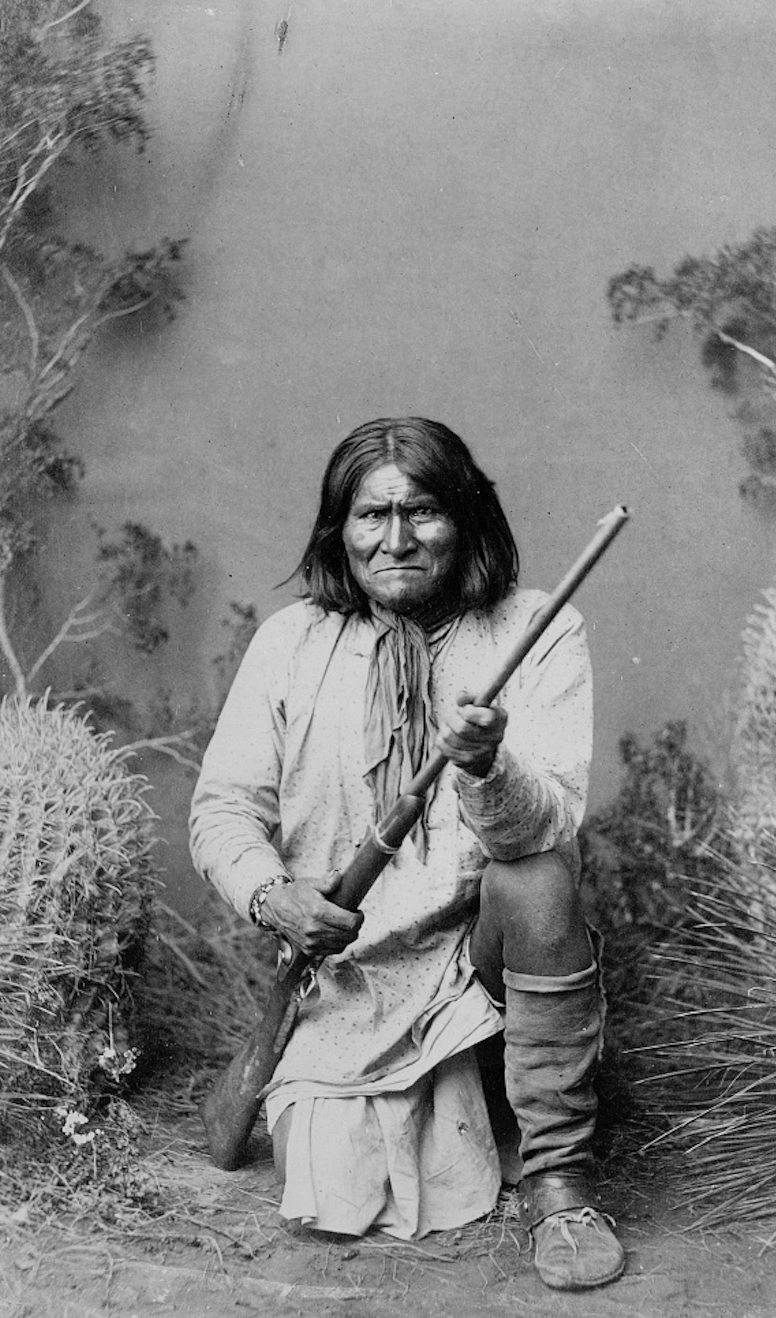For many years I thought the most fascinating thing about the Apache warrior Geronimo was not how he came by his catchy moniker (credit goes to his enemies, Mexican soldiers) but the meaning of his Chiricahua name, Goyahkla (“One Who Yawns”). This man of both direct and elusive action had a reputation for plundering, killing, mutilating and generally making the residents of the Southwest as restless as Mexican jumping beans. Even 54 years after the man died, the name Geronimo could still elicit fear in a 10-year-old white lima bean rooting back in Ohio for the Cleveland Indians in the American League and the U.S. Army in Vietnam. I guess it struck me as amusing that such a tirelessly brutal fellow could be tied to yawning—something that I associated with boredom and lack of stimulation and that my fifth-grade teachers associated with me. It would be like calling President John F. Kennedy “One Who Burps” or Cleveland pitcher “Sudden Sam” McDowell “One Who Breaks Wind.”
Fortunately, I have matured to a degree and am no longer fascinated by yawns (though have you ever noticed how yawns can trigger other yawns?). Geronimo remains intriguing, for I now know the man did far more than kill and yawn. I recently raised my Geronimo IQ by reading both Robert M. Utley’s new bio Geronimo (you expected it to be called Goyahkla?) and Edwin R. Sweeney’s Geronimo cover story. First off, let me say that neither of these finely tuned works will occasion the slightest yawn. Utley gives ample evidence for his assertion that Geronimo is the most famous—but not the most accomplished or honorable—American Indian of all time (and yes, that moniker has something to do with it). The author, while expertly presenting Geronimo’s career in raid and war and his legacy as “a not very likable man,” also touches on the man’s lesser-known side, the one featuring his reputed supernatural power, which alternately intimidated and impressed his fellow Chiricahuas. “Geronimo possessed, or was thought to possess, this surreal potency that could be applied for harm or help,” Utley writes in his prologue. “His Power included high achievement as a shaman, or medicine man, with healing qualities.”
This side of Geronimo is the focus of Sweeney’s feature article, “Geronimo: Apache Shaman” (you expected “Goyahkla: Apache Yawner”?). “His people,” Sweeney writes, “regarded him as an important medicine man, able to act as both surgeon and herbalist to cure his patients.” Yes, the stocky warrior known for his strength, endurance and ferocity could also be Geronimo the Gentle. Sweeney cites Geronimo’s use of a pollen treatment in 1880 to heal a critically ill man, and a ceremony in the mid-1890s to heal the ailing daughter of his friend Naiche. Because of his power, Geronimo believed—as did followers in his small band—that soldiers’ guns could never kill him or them. And that’s not all. Geronimo’s power also granted him visions in which he foresaw the results of fights. This came in handy, as much of his time off the reservation was spent fighting or avoiding fights. With power like that it’s a wonder he didn’t have more followers.
As a bonus, Sweeney provides “surprisingly candid” details that Geronimo related in an 1893 interview when imprisoned in Alabama. Captain William Bowen interviewed the Apache shaman, with George Wrattan interpreting, and the information did not appear in Geronimo’s 1906 autobiography. Geronimo refused to discuss “the warpath” with Bowen. But there was a lot more to Geronimo than fighting, especially when you consider his later years (he died in 1909), when he was technically a prisoner of war in Florida, Alabama and Oklahoma.
Anyway, I now find the most fascinating thing about Geronimo to be his supernatural power. I suspect that upon surrendering to Brig. Gen. Nelson Miles in Skeleton Canyon, Arizona Territory, in September 1886, Geronimo was not inclined to suppress a powerful yawn.





